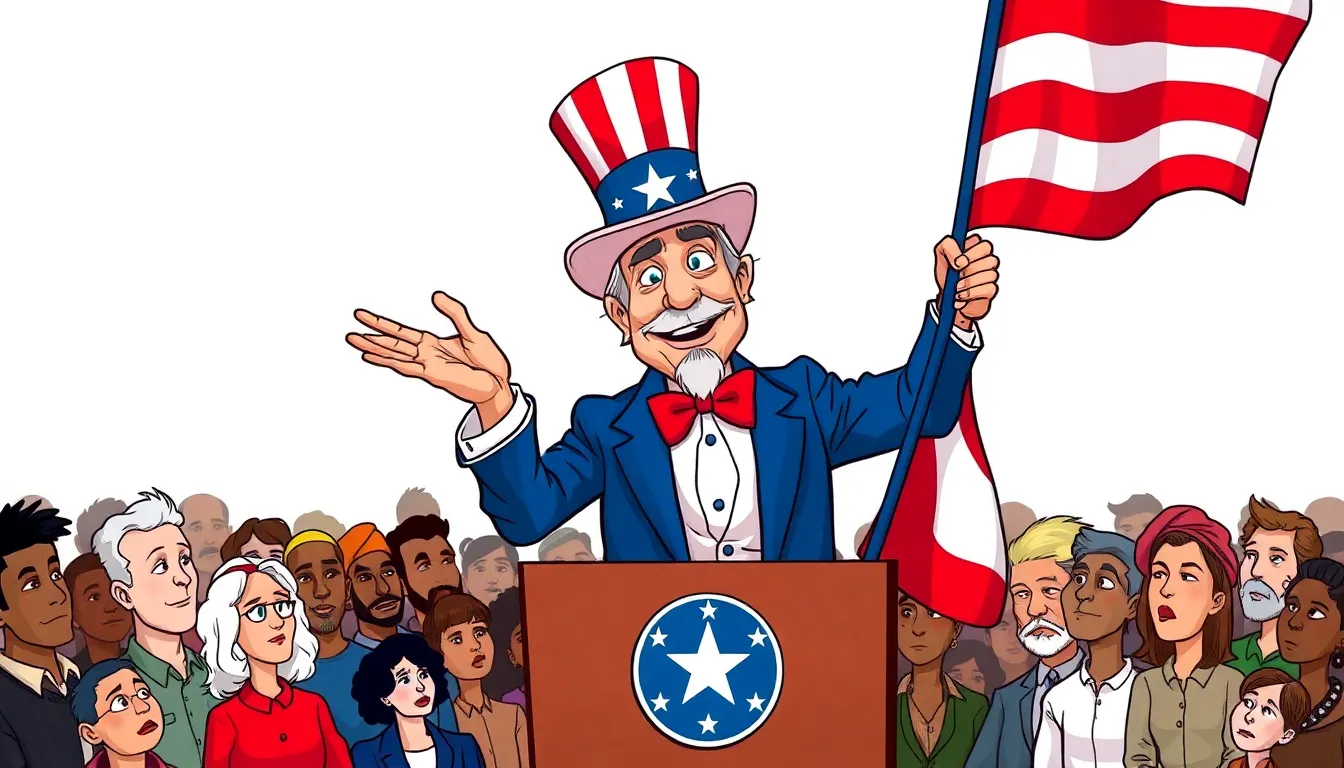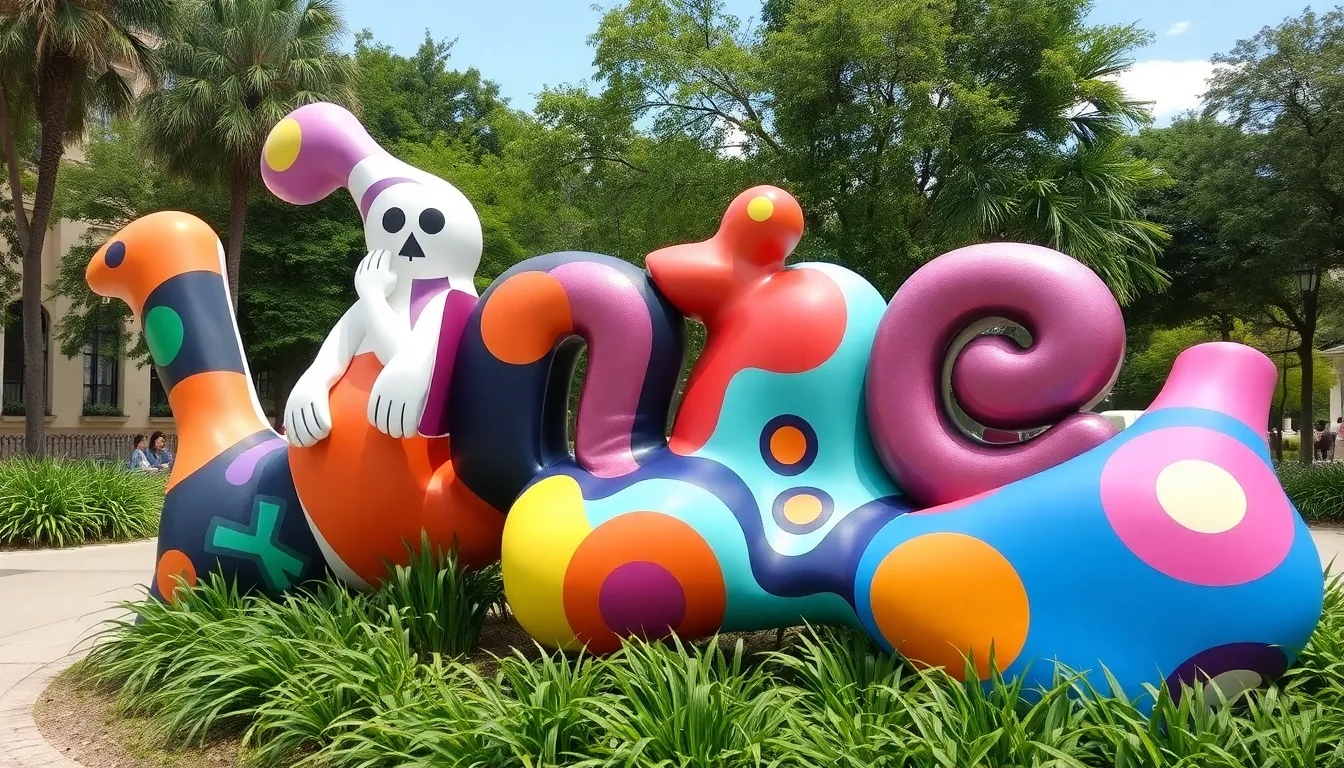Table of Contents
ToggleIn a world where political debates can feel like a circus, nationalism often takes center stage, complete with its own colorful cast of characters. Political cartoons serve as the perfect lens to capture the absurdities and ironies of this fervent ideology. With a clever blend of humor and insight, these illustrations poke fun at the extremes of national pride, revealing both the passion and pitfalls of nationalism.
Imagine a cartoon where Uncle Sam’s hat is so tall it scrapes the clouds, or a globe that spins wildly out of control. These images don’t just make us chuckle; they spark conversations about identity, belonging, and the sometimes ridiculous lengths people go to in the name of their country. Dive into the world of nationalism through the sharp wit of political cartoons, and discover how humor can illuminate serious issues in a way that’s both entertaining and thought-provoking.
Understanding Nationalism
Nationalism serves as a strong force in shaping identities and political landscapes. Political cartoons often reflect this concept, highlighting both its positive and negative aspects.
The Concept of Nationalism
Nationalism represents an ideological commitment to a specific nation. It emphasizes shared culture, language, and history, fostering a sense of belonging. People rally around common symbols, traditions, and values tied to their nation. Political cartoons use satire to illustrate how nationalism can unite people or lead to xenophobia. Humor, through exaggerated representations, critiques national pride as it sometimes borders on extreme or irrational. These cartoons play a pivotal role in encouraging dialogue about national identity.
Historical Context
Historical events shape nationalism in profound ways. The rise of the nation-state during the 19th century defined modern nationalism. Wars, revolutions, and colonization influenced national sentiments globally. The aftermath of World War I and II solidified many countries’ identities, encouraging citizens to adopt national narratives. Political cartoons from these eras often focused on the outcomes of conflict, depicting leaders and their policies. By capturing historical moments, these illustrations illuminate how nationalism thrives under specific conditions, addressing societal fears and aspirations.
The Role of Political Cartoons

Political cartoons play a crucial role in conveying the complexities of nationalism. These illustrations provoke thought while providing commentary on identity, pride, and the risks associated with extreme nationalism.
Definition and Purpose
Political cartoons blend art and journalism to deliver commentary on political events and social issues. They often utilize satire and humor to simplify complex topics, making them more approachable. Through exaggerated imagery, cartoons highlight the absurdities within nationalist movements. For example, they can emphasize the contradictions in national pride and identity. As a result, audiences engage with the content, reflecting on their perspectives regarding nationalism. These visuals serve to spark dialogue, offering a lens through which viewers can critically analyze prevailing sentiments about national identity.
Influence on Public Opinion
Public opinion often shifts in response to the insights provided by political cartoons. These illustrations possess the power to challenge existing views on nationalism. They can evoke emotional reactions, guiding audiences toward critical reflection on their beliefs. By presenting different aspects of nationalism, cartoons highlight potential dangers such as xenophobia and exclusion. Furthermore, political cartoons touch on shared experiences and cultural narratives, facilitating connections among diverse groups. This engagement shapes collective understanding, prompting individuals to reassess their opinions on national pride and identity.
Analyzing Nationalism Political Cartoons
Political cartoons reveal insights into nationalism through the use of humor and irony. They reflect societal attitudes while prompting critical discussions about national identity.
Common Themes and Symbols
Nationalism cartoons often incorporate common themes like unity, pride, and exclusion. Symbols such as flags, iconic figures, and national monuments convey messages about belonging. Artists frequently utilize exaggerated imagery to highlight the absurdities and contradictions of national pride. Characters like Uncle Sam represent American ideals, while other figures embody stereotypes, illuminating both positive and negative aspects of nationalism. Through these symbols, cartoons provoke thought about myths surrounding national identity and the consequences of xenophobic attitudes.
Case Studies of Notable Cartoons
Several notable cartoons exemplify the complexities of nationalism. One famous cartoon from the early 20th century portrays a chaotic globe with various nations battling for territory. This illustration critiques the destructive nature of extreme nationalism while evoking fear of conflict. Another cartoon features a group of diverse characters uniting under a single flag, celebrating shared values. This piece emphasizes the potential for unity amidst diversity. Each case study showcases how artists leverage satire to comment on both the positive and negative implications of nationalism, encouraging viewers to reflect on their own beliefs.
The Impact of Nationalism Political Cartoons
Political cartoons play a vital role in shaping perceptions of nationalism. Through humor and satire, these illustrations capture the essence of national identity, influencing how people view their country and its values.
Shaping National Identity
Nationalism political cartoons reflect and shape collective identities. Artists often feature iconic figures and symbols, creating a visual language that resonates with audiences. These illustrations prompt individuals to explore their cultural roots, language, and historical narratives. By presenting shared experiences, they cultivate a sense of belonging. Representation of national pride can also evoke strong emotional responses. For instance, exaggerated depictions of national symbols can challenge viewers to rethink their perspectives. Overall, these cartoons serve as mirrors, revealing how national identity forms and evolves within society.
Critique and Commentary
Political cartoons critique nationalism, using satire to highlight its complexities. They often target extreme nationalism while exposing its potential hazards, such as xenophobia and exclusion. By employing irony, artists provoke critical discussions around national pride, challenging established views. Common themes include unity juxtaposed with division, represented through striking imagery. Cartoons may depict national leaders in humorous, exaggerated manners to highlight contradictions. They invite viewers to confront difficult realities about their national narrative. This commentary fosters dialogue, encouraging individuals to evaluate their beliefs regarding nationalism.
Political cartoons serve as a powerful medium for exploring the nuances of nationalism. Through humor and satire they challenge audiences to confront the complexities of national identity. By exaggerating symbols and figures these cartoons not only entertain but also provoke critical reflection on the implications of extreme nationalism.
As they depict both unity and division these illustrations facilitate important conversations about belonging and identity. They encourage individuals to reassess their views on national pride and its potential dangers. Ultimately political cartoons remain a vital tool for understanding the intricate relationship between nationalism and society.




